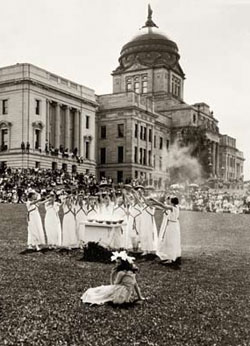Montana: Stories of the Land
Companion Website and Online Teacher's Guide
Chapter 10 - Politics and the Copper Kings, 1889-1904
Chapter 1 - Montana: Where the Land Writes History
Chapter 2 - People of the Dog Days
Chapter 3 - From Dog Days to Horse Warriors
Chapter 4 - Newcomers Explore the Region
Chapter 5 - Beaver, Bison, and Black Robes
Chapter 6 - Montana's Gold and Silver Boom
Chapter 7 - Two Worlds Collide
Chapter 8 - Livestock and the Open Range
Chapter 9 - Railroads Link Montana to the Nation
Chapter 10 - Politics and the Copper Kings
Chapter 11 - The Early Reservation Years
Chapter 12 - Logging in the "High Lonesome"
Chapter 13 - Homesteading This Dry Land
Chapter 14 - Towns Have Lives, Too
Chapter 15 - Progressive Montana
Chapter 16 - Montana and World War I
Chapter 17 - Montanans on the Move
Chapter 18 - The Great Depression Transforms Montana
Chapter 19 - World War II in Montana
Chapter 20 - Building a New Montana
Chapter 21 - A People's Constitution
Chapter 22 - Living in a New Montana
Woman Suffrage or Women's Suffrage?
In the nineteenth and early twentieth centuries, the movement advocating votes for women was called the woman suffrage movement, and its two main national organizations were the National Woman Suffrage Association and the American Woman Suffrage Association (italics added). Suffragists used the term woman rather than women to emphasize female unity and, in particular, the particular female virtues they believed all women shared. Advocates of woman suffrage believed that, once enfranchised, women would bring these virtues to bear on politics; thus, the fight for woman suffrage was not just to obtain the vote for individual (and individualistic) women but also to extend the virtues of womankind to the public realm.
In fact, it did not turn out that way. Women voters are as individualistic and politically diverse as their male counterparts, and today all major political parties and candidates count women among their supporters. For this reason, "woman suffrage" sounds awkward to modern ears, and in the textbook we use the ahistorical term "women's suffrage" to describe the movement.

